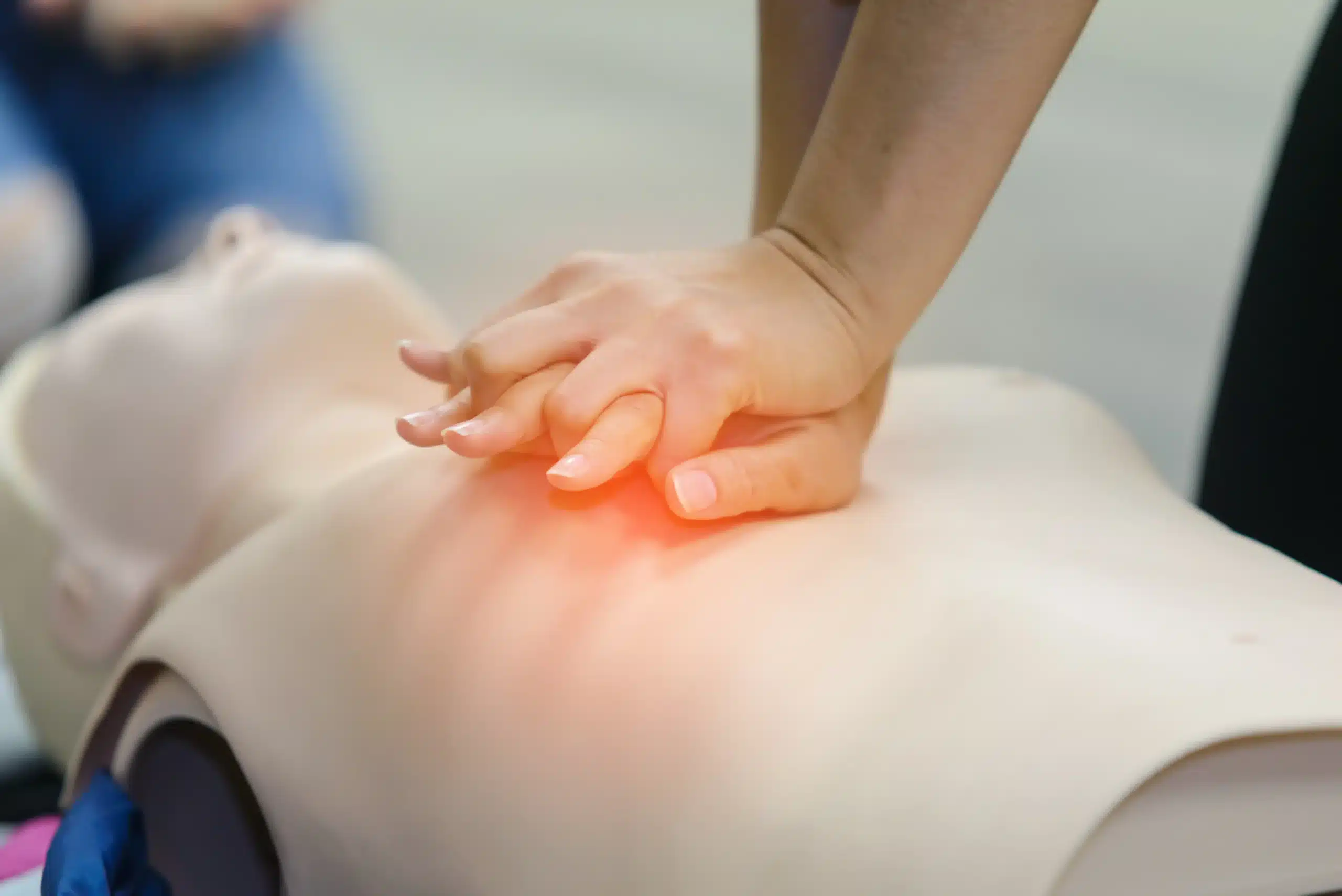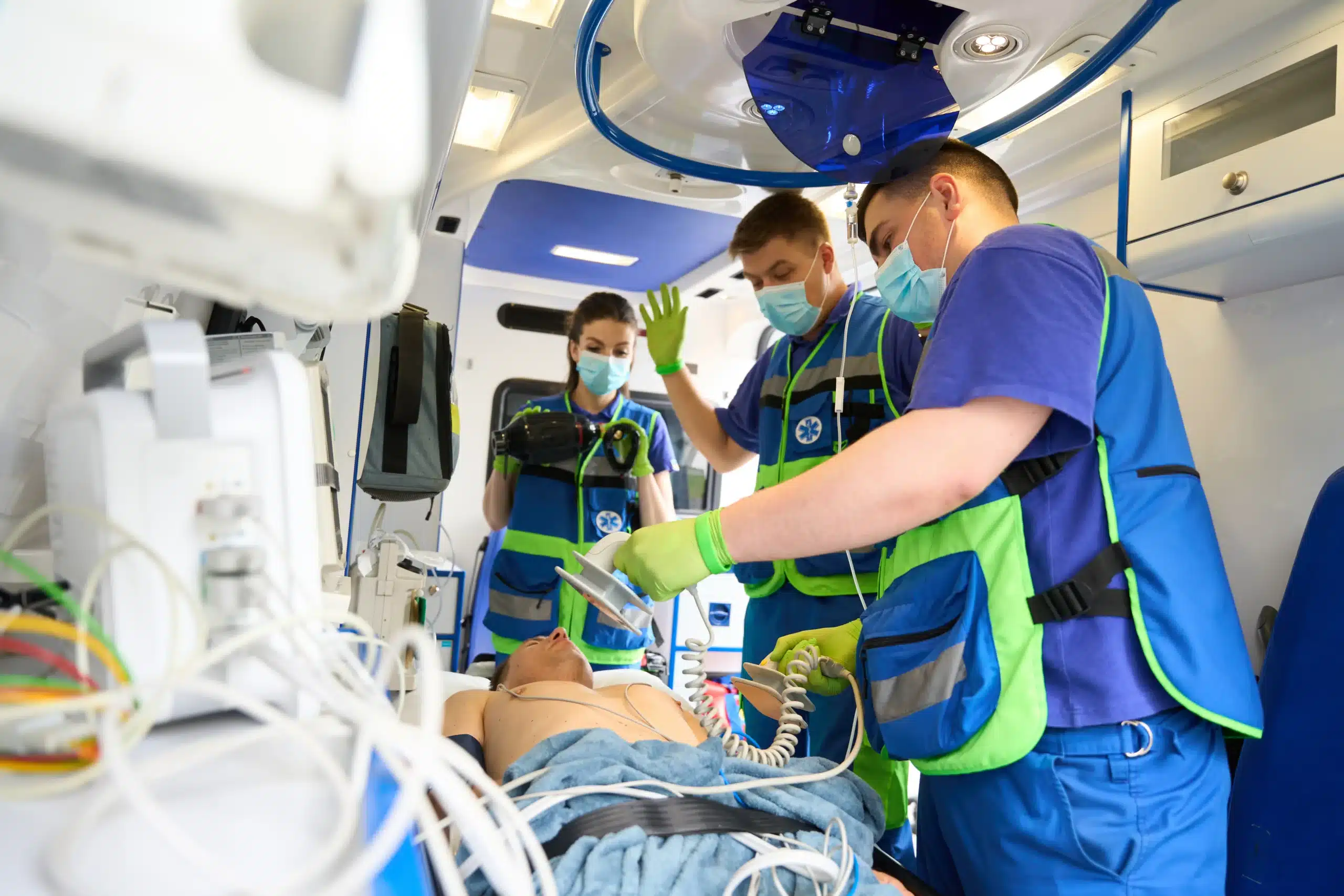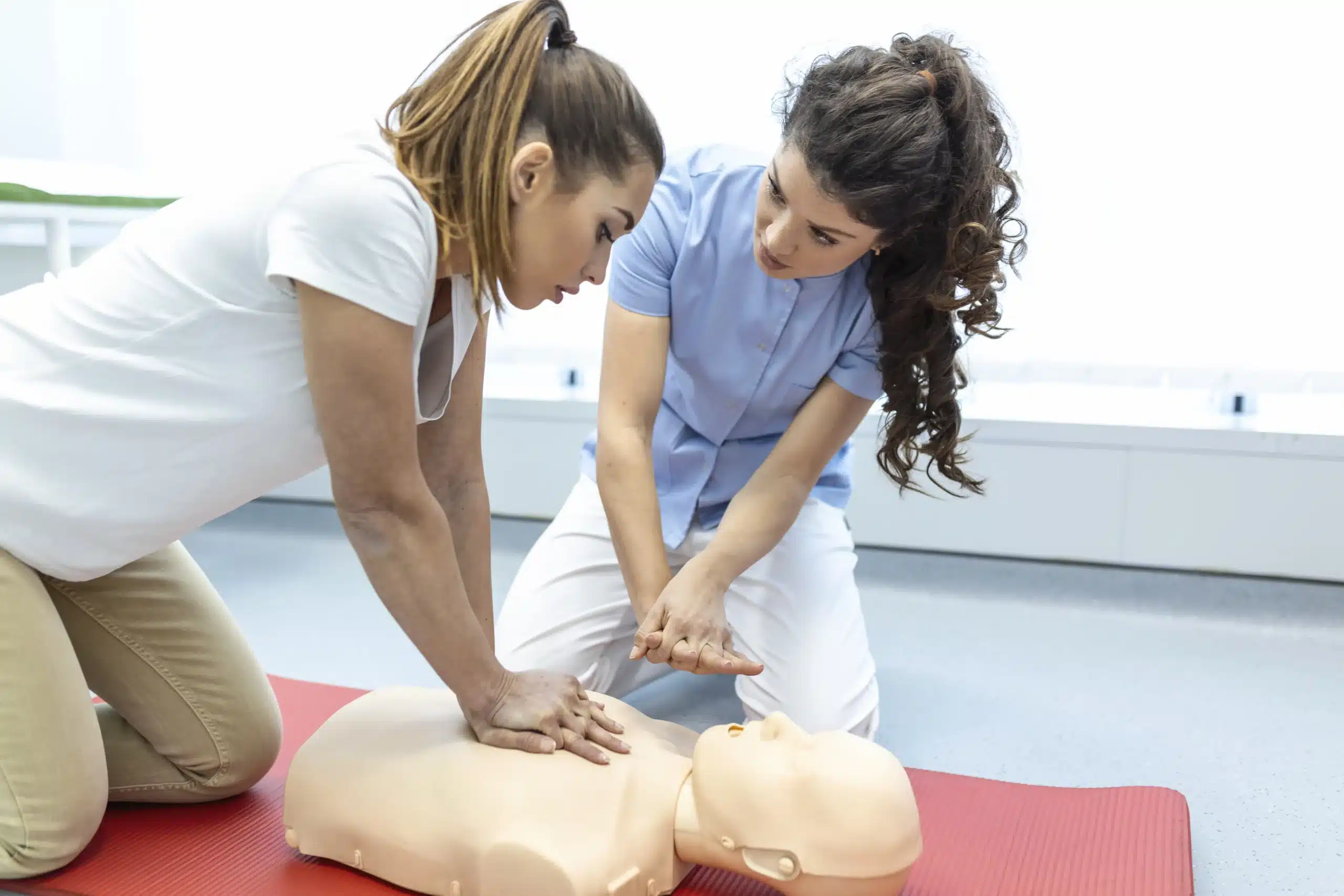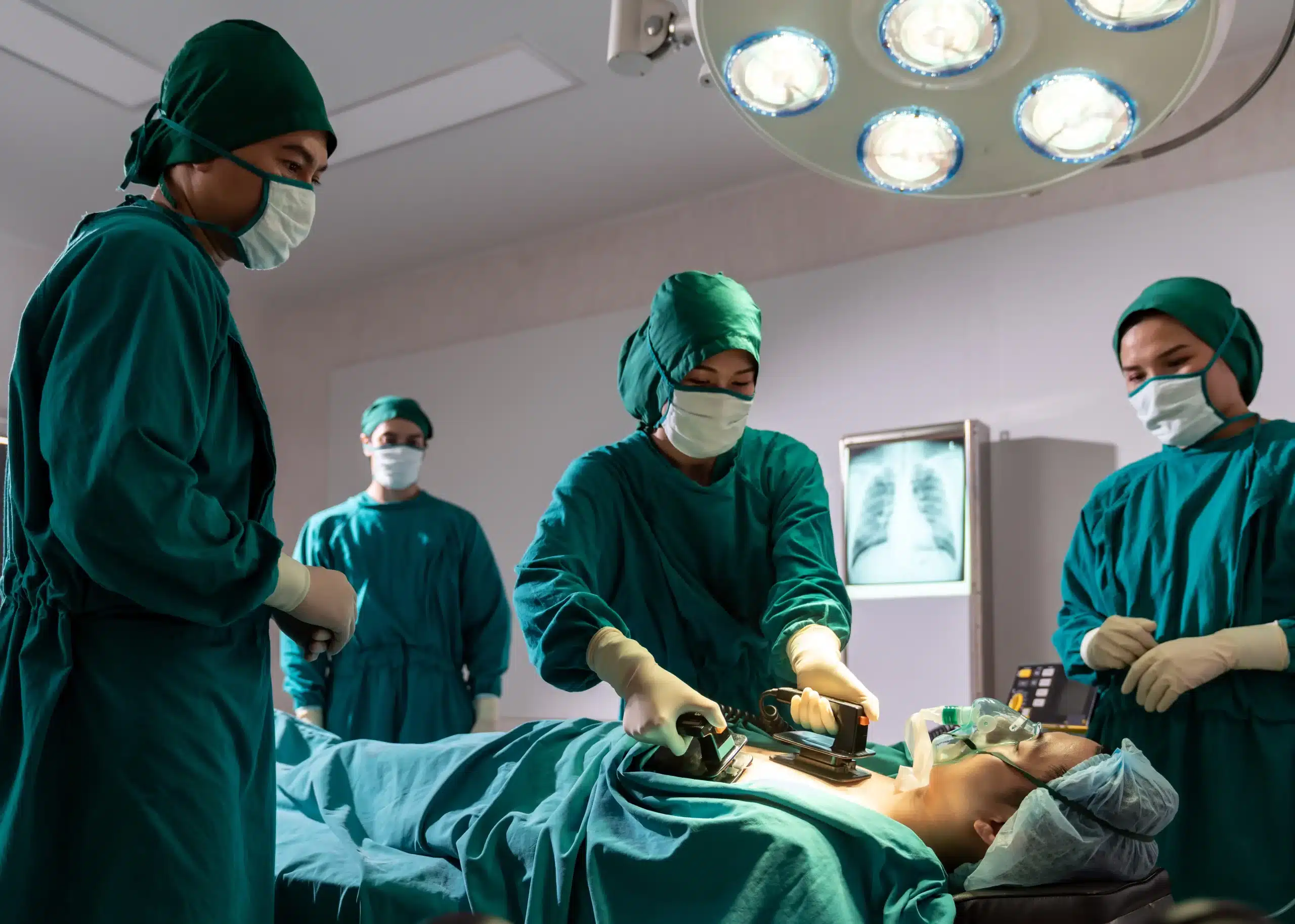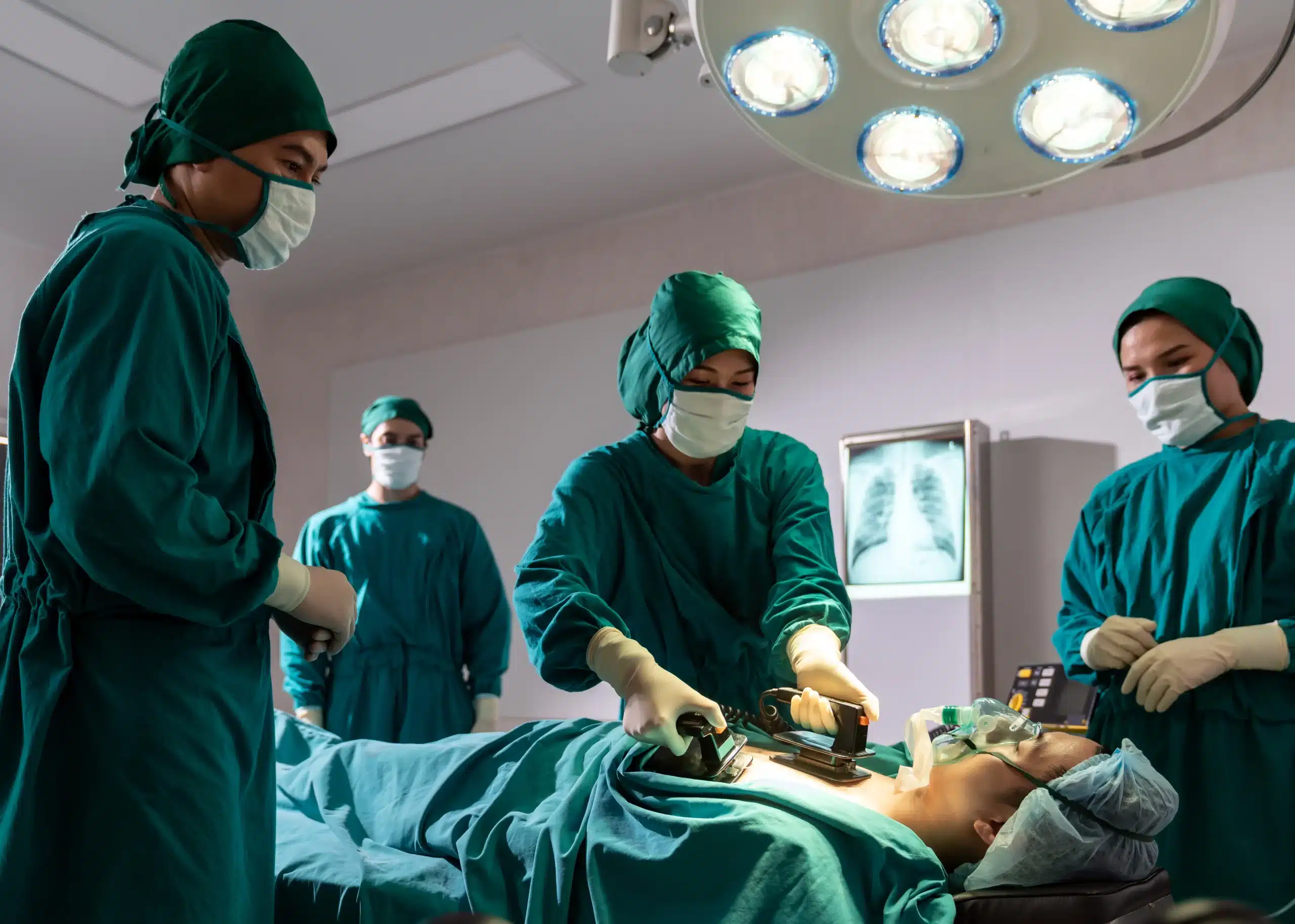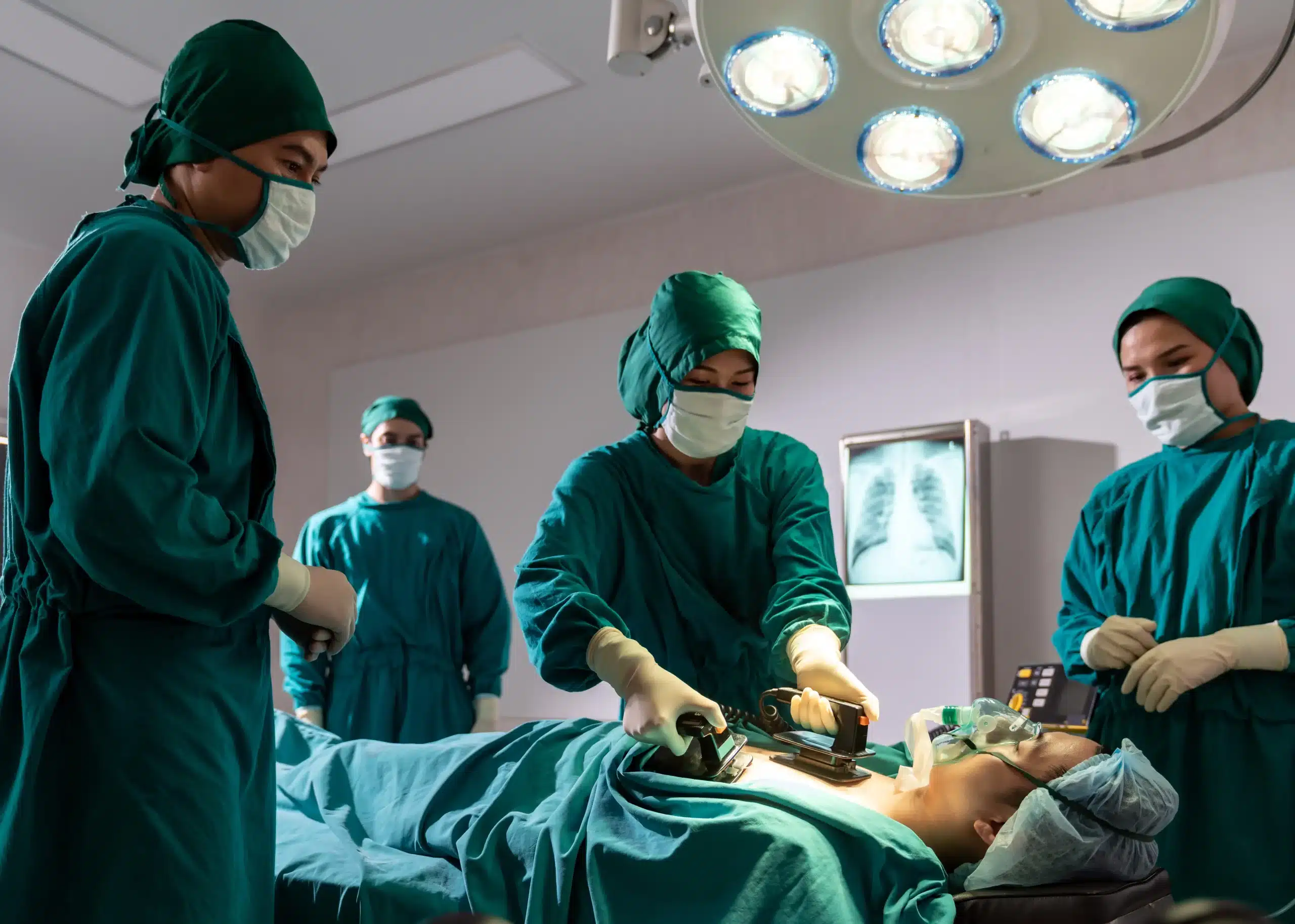In an emergency, every second counts. CPR can double or triple a person’s chance of survival during cardiac arrest, making it a truly invaluable skill. If you’re looking for “CPR certification near me,” you’re likely motivated by a desire to help others and be prepared for the unexpected. This guide will help you understand the different types of CPR courses available, from basic life support (BLS) for healthcare providers to Heartsaver courses for the general public. We’ll explore the pros and cons of online versus in-person training, discuss specialized certifications like the EMSA Child Care Health & Safety course, and provide resources for finding CPR classes in your area, including those offered by San Rafael CPR Classes. We’ll also cover essential tips for choosing the right course, preparing for your training, and maintaining your certification.
Key Takeaways
- CPR Certification Builds Confidence in Emergencies: Formal training provides the skills and knowledge to respond effectively during cardiac arrest and other breathing emergencies, empowering you to make a difference when seconds count. Select a course that meets your specific needs and professional requirements.
- Finding the Right Course Is Simple: Explore options from local providers like San Rafael CPR Classes to national organizations like the American Red Cross and the American Heart Association. Consider course content, format (online, in-person, or blended), and schedule flexibility.
- Preparation and Practice Maximize Effectiveness: Understand the training process and utilize resources like real-time feedback tools to refine your technique. Regular practice is essential for maintaining proficiency and ensuring you’re always prepared to respond confidently in a real-life emergency.
CPR Certification: What It Is and Why You Need It
CPR certification equips you with the skills to respond effectively during cardiac arrest or other breathing emergencies. While you’re not legally required to have certification to perform CPR, completing a course ensures you’re adequately prepared. A structured CPR course provides hands-on practice and guidance from certified instructors, building your confidence and competence in real-life scenarios. This training empowers you to make a real difference when every second counts.
CPR Course Types
Several CPR certification courses cater to different needs and experience levels. The American Red Cross, for example, offers a range of programs, including those designed for healthcare providers, the general public, and even specialized courses for schools and workplaces. These courses often cover essential skills like adult, child, and infant CPR, AED usage, and choking protocols. Understanding the different course options available helps you choose the best fit for your specific requirements. San Rafael CPR Classes offers a variety of courses, including BLS, ACLS, PALS, and First Aid, ensuring comprehensive training options for everyone. For those in childcare, exploring the EMSA Child Care Health & Safety course may be beneficial.
Online vs. In-Person Training
When considering CPR certification, you’ll encounter various training formats. Online courses offer flexibility and convenience, allowing you to learn at your own pace. However, online-only CPR training may not meet all workplace requirements or professional licensing standards. In-person classes provide hands-on practice and direct feedback from instructors, crucial for mastering proper CPR techniques. Blended learning, combining online modules with in-person skills sessions, offers a balance of flexibility and practical experience. For healthcare providers, in-person or blended learning courses are often preferred, as they typically align with workplace standards and provide the necessary hands-on training. If you’re unsure which format is right for you, check your workplace requirements or explore the in-person training options at San Rafael CPR Classes. They also offer an RQI program for medical professionals seeking a quick and efficient certification process. San Rafael CPR Classes is committed to providing affordable training, as highlighted by their low price guarantee.
Find CPR Certification Providers Near You
Finding the right CPR certification course often starts with a simple “CPR classes near me” search. But with so many options, it can be tricky to choose. This section breaks down some reputable providers in the San Rafael area, highlighting what they offer to help you make an informed decision.
San Rafael CPR Classes
If you’re in Marin County, San Rafael CPR Classes offers a comprehensive range of courses, including BLS, ACLS, PALS, and First Aid. They focus on providing excellent customer service and even have a low price guarantee. Their convenient location serves San Rafael, Corte Madera, and Fairfax. They also offer an RQI program, a great option for busy medical professionals seeking efficient recertification. For those working in childcare, they also offer the EMSA Child Care Health & Safety course.
American Red Cross
The American Red Cross is a well-known and trusted provider of CPR and first aid training. Their San Rafael location offers various courses, including Adult, Child, and Baby First Aid/CPR/AED training. Their blended learning option allows you to complete the online portion at your own pace before attending an in-person skills session.
American Heart Association
The American Heart Association (AHA) offers a range of CPR and ECC courses in San Rafael and throughout the Bay Area. They provide various learning formats, including in-person, blended learning, and online options, catering to different learning styles and schedules. Their BLS and Heartsaver courses are popular choices. You can often find AHA courses offered through various training centers and hospitals.
Local Hospitals and Community Centers
Checking with local hospitals and community centers is another excellent way to find CPR classes. These organizations often host training sessions, making them a convenient and sometimes more affordable option. For example, Safety Training Seminars offers a variety of AHA-certified courses in San Rafael, including BLS, ACLS, PALS, and First Aid/CPR. These local options can be a great way to connect with your community. You can also check our Northern California CPR Directory for more options.
Choose the Right CPR Course
Knowing which CPR class is right for you can feel overwhelming, but it doesn’t have to be. CPR courses are designed to meet the needs of different audiences, from healthcare professionals to everyday people. Let’s break down the options to help you find the perfect fit.
BLS for Healthcare Providers
The BLS course from the American Heart Association (AHA) equips healthcare professionals with the skills to respond to emergencies. This course covers adult, child, and infant CPR, how to use an AED, and critical team dynamics. BLS certification is essential for doctors, nurses, paramedics, and other healthcare providers. It’s also often a job requirement for these roles. San Rafael CPR classes offers the RQI program, a more efficient way for healthcare professionals to renew their BLS certification.
Heartsaver CPR AED for Non-Medical Professionals
If you’re not a healthcare provider but want to learn CPR and how to use an AED, the Heartsaver CPR AED course is a great option. This course is designed for anyone who might need to respond to a cardiac emergency, such as teachers, coaches, personal trainers, and office workers. It’s also a smart choice for parents, grandparents, or anyone who wants to be prepared to help in a crisis.
Pediatric and Advanced Life Support Courses
For healthcare providers working with infants and children, PALS (Pediatric Advanced Life Support) training is key. This course focuses on assessing and managing critically ill or injured children. It builds on the skills learned in BLS and provides specialized knowledge for pediatric emergencies. Other advanced courses, like ACLS (Advanced Cardiac Life Support), are also available for healthcare professionals who need more specialized training.
Specialized Industry Certifications
Some industries require specialized safety certifications, like the EMSA Child Care Health and Safety course. This course covers CPR, first aid, and other essential health and safety topics relevant to childcare providers. Check with your employer or professional organization to see if specialized training is recommended or required for your field. You can also find a directory of CPR training providers in Northern California to help you find the right course. San Rafael CPR Classes offers a low price guarantee, so you can find affordable, high-quality training.
Cost, Duration, and Validity: What to Expect
CPR certification is an investment in your skills and ability to respond to emergencies. Understanding the costs, time commitment, and how long your certification is valid will help you choose the right course.
Average Pricing and Discounts
CPR course fees vary depending on the provider, location, and the type of certification. Basic CPR courses, including AED training, can start around $45, like those offered by CPR Select. You can often find more affordable options by taking advantage of discounts. For example, the American CPR Care Association offers lower prices for group enrollments and combined courses. Check with your chosen provider for potential discounts and compare pricing before registering for a class. Our low price guarantee ensures you’re getting the best possible value.
Course Duration and Time Commitment
CPR courses are designed to fit a variety of schedules. In-person, blended learning, and online options are available, catering to different learning styles and time constraints. The American Heart Association offers a range of courses suitable for both healthcare professionals and the general public. Consider your availability and preferred learning method when selecting your course. San Rafael CPR classes are available to fit your busy schedule.
Certification Validity and Renewal
Most CPR certifications remain valid for two years. It’s important to remember that these skills can deteriorate over time, so regular practice is crucial for maintaining proficiency. The Red Cross Scientific Advisory Council highlights the importance of staying up-to-date with the latest guidelines and techniques. Plan to renew your CPR certification every two years to ensure your skills remain sharp and you can respond effectively in an emergency.
Prepare for Your CPR Certification
Getting ready for your CPR certification? Great! Knowing what to expect can make the whole process smoother and help you get the most out of your training. This section covers everything from training day logistics to helpful tips for acing the course.
What to Expect During Training
CPR training blends theory and hands-on practice. Expect interactive discussions about recognizing emergencies and providing assistance. You’ll learn the steps of CPR—chest compressions, rescue breaths, and how to use an AED (automated external defibrillator). A significant part of the training involves practicing these skills on mannequins, allowing you to build muscle memory and confidence. Remember, CPR training can significantly increase survival rates during cardiac arrest, even for bystanders, so your active participation is key. The Red Cross website details the impact of CPR training.
Essential Materials and Equipment
Most CPR courses provide the necessary training materials, often developed by experts and updated regularly. This includes manuals, videos, and of course, the mannequins. You won’t need to bring much, but it’s always a good idea to wear comfortable clothing that allows for free movement since you’ll be actively practicing CPR techniques. For details on what to expect, the Red Cross offers more information on their training materials. Check with your specific provider, like San Rafael CPR Classes, to confirm if there’s anything specific they recommend.
Tips for Success
Come prepared to actively participate and ask questions. Don’t hesitate to clarify anything you’re unsure about—your instructor is there to help you succeed. Taking notes during the instructional portions can be helpful, and practicing the techniques regularly between sessions will solidify your skills. Also, consider scheduling your training when you’re well-rested and can focus.
Real-Time Feedback and Improvement
Many modern CPR courses incorporate real-time feedback devices. These tools provide valuable insights into the depth and rate of your compressions, helping you refine your technique and improve the overall quality of your CPR. This real-time feedback significantly enhances CPR performance. It’s a great way to build confidence and ensure you’re providing effective CPR in a real-life emergency. And remember, maintaining your skills is crucial. Consider taking a Red Cross refresher course periodically to stay up-to-date and ready to respond.
Related Articles
- Why CPR is Important in Healthcare – San Rafael CPR Classes
- CPR Certification in San Rafael: Your Complete Guide – San Rafael CPR Classes
- CPR Renewal in Fairfax: Your Complete Guide – San Rafael CPR Classes
- CPR Classes in Fairfax: Your Complete Guide – San Rafael CPR Classes
- CPR Certification in Fairfax: Your Complete Guide – San Rafael CPR Classes
Frequently Asked Questions
What if I’m not sure which CPR course is right for me? If you’re unsure which CPR course suits your needs, consider your current profession or aspirations. Healthcare providers typically require BLS certification, while non-medical professionals might find the Heartsaver CPR/AED course sufficient. If you work with children, a specialized pediatric course like PALS is recommended. Contacting a training provider, such as San Rafael CPR Classes, can provide personalized guidance based on your specific circumstances.
Are online CPR courses accepted everywhere? While online CPR courses offer flexibility, they might not fulfill all workplace requirements or professional licensing standards. Many organizations prefer or require in-person training, especially for healthcare professionals. It’s essential to verify the specific requirements of your workplace or licensing board before opting for an online-only course. Blended learning options, combining online modules with in-person skills sessions, can offer a suitable alternative.
How often do I need to renew my CPR certification? Most CPR certifications are valid for two years. Regular renewal ensures your skills remain current and aligned with the latest guidelines. Even if your certification hasn’t expired, periodic refresher courses can help maintain your proficiency and confidence in responding to emergencies.
What should I bring to my CPR training? You won’t typically need to bring much to your CPR class. The training provider usually supplies all necessary materials, including manuals, videos, and practice mannequins. Wearing comfortable clothing suitable for active movement is recommended, as you’ll be practicing CPR techniques. Contacting your specific training provider beforehand can clarify any specific requirements or recommendations.
How much does CPR certification cost? CPR course fees vary based on the provider, location, and type of certification. Basic courses can start around $45, with more specialized training potentially costing more. Many providers offer discounts for group enrollments or combined courses. Comparing pricing and inquiring about potential discounts before registering can help you find the most affordable option. San Rafael CPR Classes offers a low price guarantee, ensuring competitive pricing for their courses.

